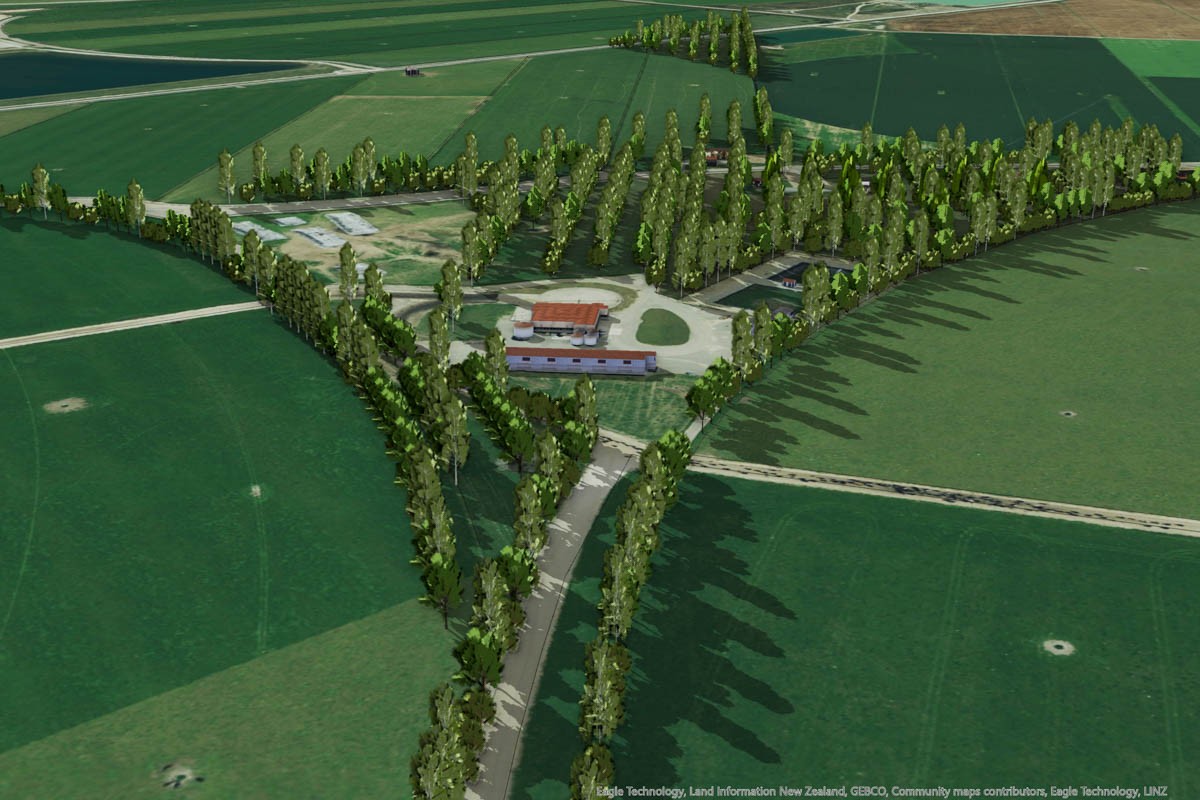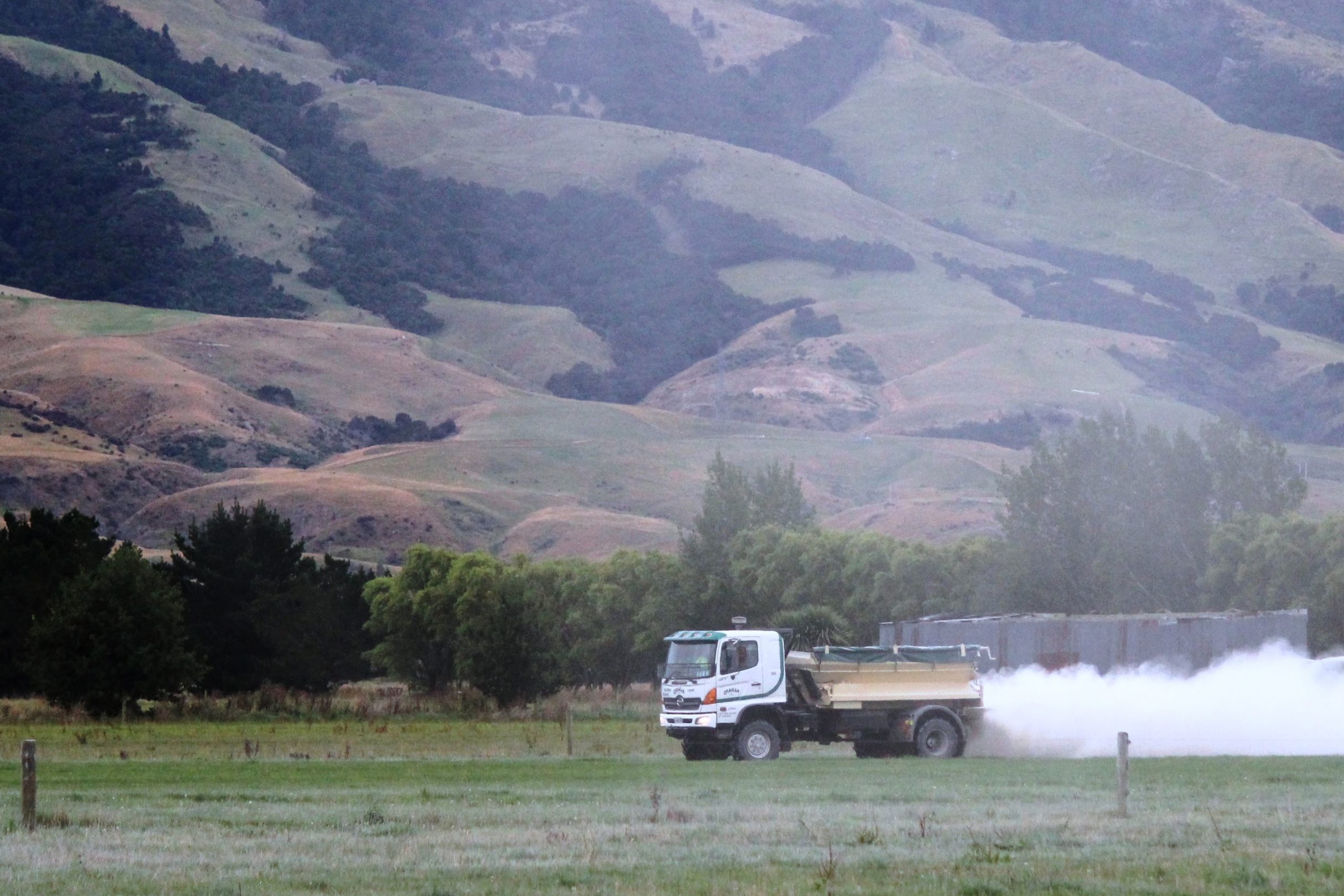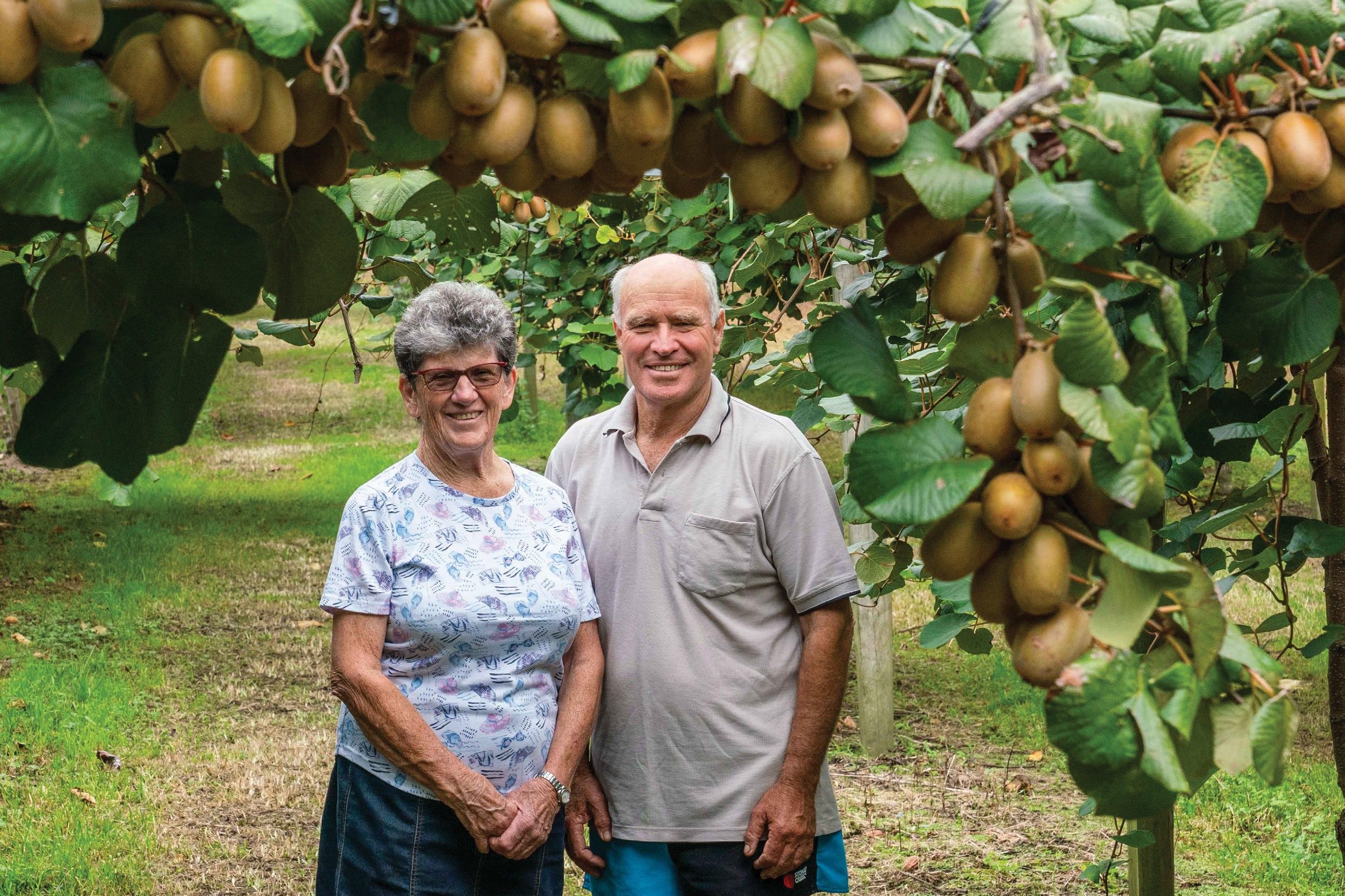A well-established farm forestry programme on marginal lands is designed to provide farm balance to be carbon zero, and possibly a surplus. Anne Hardie reports.
Steep hills backing Rosser Holdings’ farm in Golden Bay have been planted in forestry for future income and the carbon credits should enable them to eventually have a carbon-neutral farm.
Robert and Cindy Rosser own 25% of the shares in the family farm near Upper Takaka alongside Robert’s parents, Roger and Shirley, and today it encompasses a 170-hectare milking platform for 550 cows, 85ha of support land and about 85ha of forestry in varying stages of growth.
Over the fence, a 250ha block was bought in partnership with neighbours years ago and 125ha on the hills were planted in pine trees that are now just two years from harvest, while a further 75ha of pines have been planted in partnership over the years at nearby St Arnaud and Tapawera.
Robert says the family began planting forestry decades ago on marginal land and their most recent harvests of 3ha last June, then 8ha in November netted $65/tonne which will finance the new house they plan to build. They have now registered for carbon credits with the help of a consultant because it “would be a mission” to wade through it by themselves, and depending on how the Government decides to charge agriculture for carbon emissions, those credits could provide the farm balance to be carbon neutral and possibly provide surplus to sell.
‘I think palm kernel is something the industry has to look at going out of and though we pay more for pellets, it’s a better product.’
“If we can become carbon zero, we hopefully won’t have to pay so much per cow,” he says. “This year we can decide whether we want to sell those carbon credits, lease them out or hang on to them. We’ll definitely hang on to them until we work out what we need for the dairy farm to make it zero carbon in future.
“It’s risky because we don’t know what the Government will decide and we may be better leasing them. At the moment carbon credits get good money – $20 per credit – but if you sell them and cut the trees down, you have to buy carbon credits back. And you don’t know what they will be worth then, or what the trees will be worth. There’s a lot of unknowns. Government can change and can be radically different.”
They could leave the trees unpruned and that would result in more carbon credits because there’s more branches to store more carbon and that’s taken into the equation. But they could then miss out on good log prices, so they prune to get the best money for a good first butt on the logs.
Right now, forestry returns are strong and in recent years there has been increased investment in the industry, encouraged also by Government support including the One Billion Trees planting programme which provides subsidies for planting new land with certain criteria.
As Robert says, forestry is a long-term investment that needs to be done right to achieve good results. From the beginning, they have used contractors to source and plant seedlings, prune and thin plantations, then harvest the resulting crop. A good contractor in charge of the trees makes a big difference to the final tonnage, he points out.
Initially, about 1000 seedlings per hectare have been planted on their hills and over the years they are thinned to about 350 trees per hectare. In the 25 or so years it takes to reach maturity for harvest, there’s rates, insurance against fire and management costs. Plots at varying stages of maturity now provides Robert some peace of mind of another income stream.
“We’re lucky we’ve got 8ha of trees 15 years old and know we can cut down those trees in the near future if dairying is down. Though you don’t know what log prices will be and that’s the million-dollar question.”
Their latest acquisition is 20ha of mostly steep hill that they paid $5000/ha to plant in forestry, with a plateau on top which will become part of their support area.
Robert returned to the family farm 18 years ago after jobs on larger Canterbury farms where he missed the diversity of a smaller farm. Back then the farm had been run by his parents Roger and Shirley who were milking 330 mostly Ayrshire cows. Rising from silty river flats to a gravelly terrace and then pakihi slopes, it was a dryland farm that suffered through the summer dry.
“Then we put irrigation on with K-line and discovered we could actually grow grass, so we decided to build a 50-bail rotary and milk 400 cows in two herds. Then we decided to make life easier and put three pivots on seven years ago, plus Protrack, cup removers and meal feeding in the shed.”
When neighbouring land came on the market four years ago, they bought it and built a 53-metre bridge over the Takaka River to access 20 more hectares for the milking platform with 11ha of support land and 50ha of steep land on the Takaka Hills was planted in forestry.
With the pivots plus K-line they now irrigate two thirds of the milking platform, though don’t have enough water to run all the pivots at once, so switch them around to cover those paddocks. Extra land combined with irrigation has enabled them to build the herd to 550 cows which is 3.2 stock units/ha, plus 110 R2 heifers and 105 R1 heifers. Over time the Ayrshire herd trended toward Friesian and now crossbred.
The result over the years is a simplified system and today it takes just one person in the dairy to milk the herd and they have two fulltime staff, with Cindy taking care of the paperwork.
Part of that simple system is feeding meal pellets in the dairy. With balage and hay made on the support land, the only feed they buy in is the pellets which Robert says suits their setup and provides high energy for the cows. Through the season the herd is fed 500kg of pellets per cow which can be mixed with all sorts of minerals to feed to the cows during milking, such as magnesium which means they don’t have to dust it onto pasture.
“I think palm kernel is something the industry has to look at going out of and though we pay more for pellets, it’s a better product.”
Golden Bay at the tip of the South Island has high cartage costs and it’s $102/tonne just to get the pellets from Ashburton to the farm, so it’s not cheap, Robert concedes. But worth it for production and building cow condition after calving for mating.
The empty rate on the farm for the past five years has averaged 9% and second calvers empty rate last year was 6.2%. He attributes pellets for at least part of the lower empty rates, while reducing pressure on the herd also plays a big part.
Calving begins on August 5 which is a week later than Fonterra starts collecting milk, then the farm winds up the season about May 20, giving the cows a little longer break from milking. Plus, 150 two and three-year-old cows go on to once-a-day (OAD) milking at Christmas, though they have to walk to the furthest paddocks which are the unirrigated ones. The older girls stay on twice-a-day milking until at least the beginning of March and preferably through to early May.
“It’s less pressure on everything and the milk we produce is in less days.”
Last year production averaged 390kg milksolids (MS)/cow after putting the younger cows on OAD earlier due to drier conditions and this year Robert expects to reach 405kg MS/cow and 1310kg MS/ha. Last year their farm working expenses (FWE) worked out at $3.91/kg MS.
In winter, the herd heads to the support areas where they are fed saved pasture, hay and balage. There’s enough area to get them through winter on pasture without crop and that keeps it simple with less costs and damage.
Environmentally, they have been working on projects as they can and in the past three years have been gradually upgrading their effluent system. It spread the $210,000 project over three years that began with new pipes and pump, then a separator with a vibrating screen to remove solids that are then spread by tractor on to stony ground, then this year a Tasman above-ground tank to store 1.25 million litres of effluent. They needed the storage to give them flexibility for irrigating back on paddocks in the 2.5m rainfall they receive each year.
The terrace country is a good area for spreading effluent through spring as its gravelly nature means there’s no ponding, but now they can also spread it to other areas by storing it longer.
The high rainfall results in the Takaka River flooding over the river flats and filling dry creeks so they can’t access part of the farm, which has prompted plans to spend $70,000 on a bridge over one of the dry creeks.
Last year ex-cyclone Gita flooded about 30ha of flat land and through much of the deluge Robert was stuck between slips on the Takaka Hill. He’s a volunteer for Upper Takaka Fire and Emergency New Zealand and the excessive amount of rain disintegrated the hillsides supporting the road, so the crew were called to extricate traffic from the ensuing chaos. For two hours they were trapped between slips themselves and by the time Robert returned home, the lower part of the farm was under water.
Like the effluent project, they keep chipping away at other environmental tasks and the farm is one of 15 around the country being used in a Fonterra/Landcare Trust/DairyNZ project to do that. The objective of the Economic and Environmental Optimisation Takaka group is to model options that look at reducing nutrient losses, irrigation use and greenhouse gas emissions from the dairy farm without impacting on farm profitability.
“It’s looking at different ideas. Given time, technology will get better and there will be different feeds as well as the different things we’re doing all the time like planting shrubs and improving effluent systems. If you keep doing little things all the time, then you don’t notice the costs quite the same.”
Farm facts
Rosser Holdings
Owners: Roger and Shirley Rosser, Robert and Cindy Rosser (25%)
Milking platform: 170ha
Support land: 85ha caters for young stock, wintering and supplements
Forestry: 85ha plus partnership blocks
Herd: 550 crossbred cows – TAD for older cows while younger cows OAD from Christmas.
Production: 390kg MS/cow 2017-18; 405kg MS/cow expected this season and 1310kg MS/ha
Bought-in supplements: Meal pellets at 500kg/cow
Rainfall: 2.5m
Irrigation: Three pivots and K-line over two-thirds of milking platform





